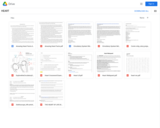
Unrestricted Use
Public Domain
Circulatory System 101 is a Health lesson designed by a Physical Education/Health Teacher to support Health instruction. Created By: Willie Miles Powhatan County Public Schools
- Subject:
- Health Education
- Health/Physical Education
- Material Type:
- Lesson
- Author:
- Gillian Lambert
- Date Added:
- 03/16/2021
